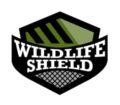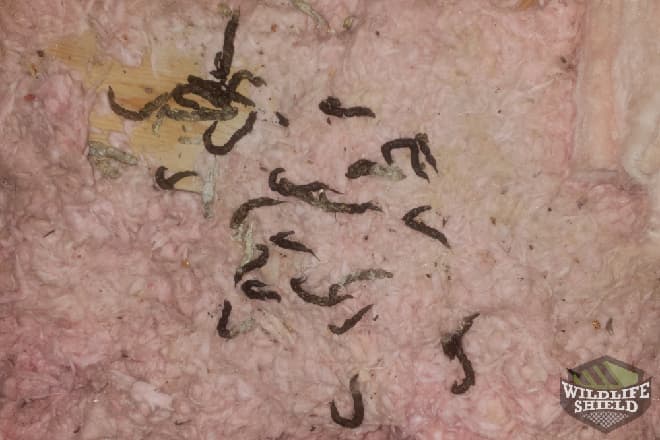The following case study details a raccoon removal and disinfection service in Caledon, Ontario. Raccoons were found living in the attic of a family’s home, then removed safely with the help of our raccoon removal team. The animal feces left in the attic were removed and the space was disinfected to ensure that no pathogens would continue to contaminate the air. Pest-proofing the roof also ensured that no more animals would get inside. This Caledon home has been raccoon-free ever since.
Inspection
The homeowners in this case first called Raccoon Control when they suspected that a raccoon was living in the attic. It was June, and they had witnessed the animal climb into a soffit at the front of the house. Female raccoons usually have their babies between April and June, so it was likely that a female had broken into the attic to raise her young. A technician soon arrived on the scene to investigate.
The first thing our technicians do when removing raccoons is to perform an inspection. Here, the technician examined the roof for signs of raccoon damage and points of entry. Identifying the entry point would determine the removal method required. Performing a complete inspection would also determine any other additional pest-proofing that the technician could carry out to keep animals out for good.
The raccoon was indeed breaking into the attic through the soffit. The soffit, where it met the shingles below, had been torn open wide enough to fit an adult raccoon. This is a common entry point as the animals can stand on the roof while pushing into the soffit. The technician also found several roof vents that were uncovered, which could be broken by raccoons or chewed through by squirrels.
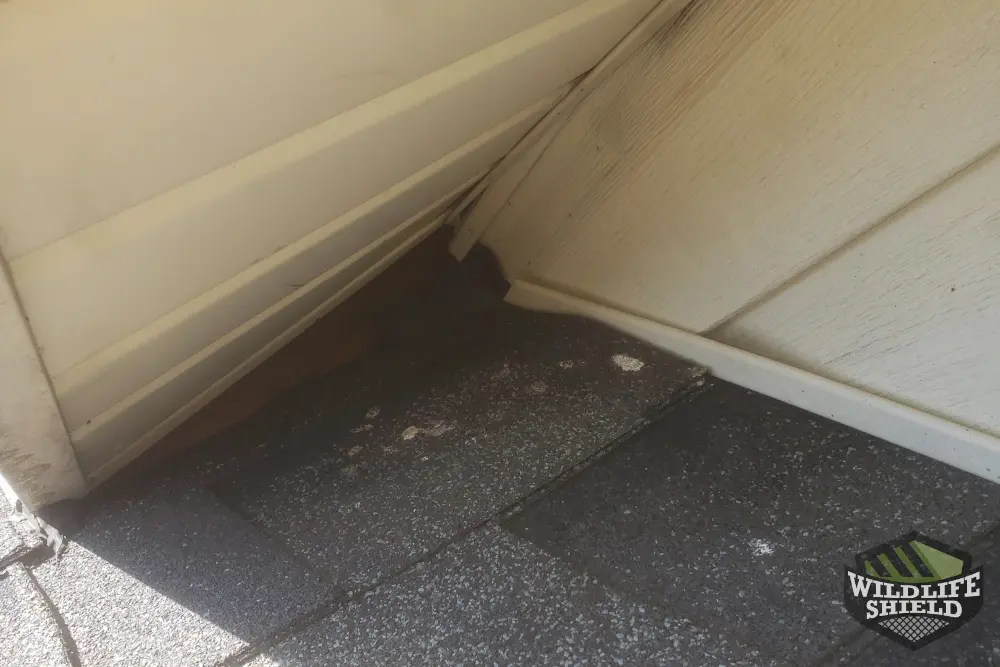
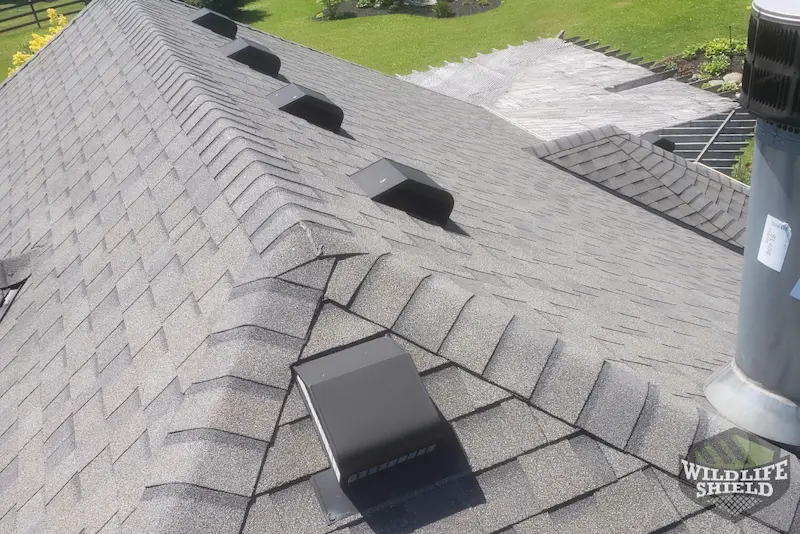
To see if there were babies inside, the technician went into the attic. None were found, but there was a pile of fresh raccoon feces in the insulation. This meant that the raccoon babies were old enough to venture out with their mother. A one-way door would be needed to evict the animals, along with the exclusion of the roof vents.
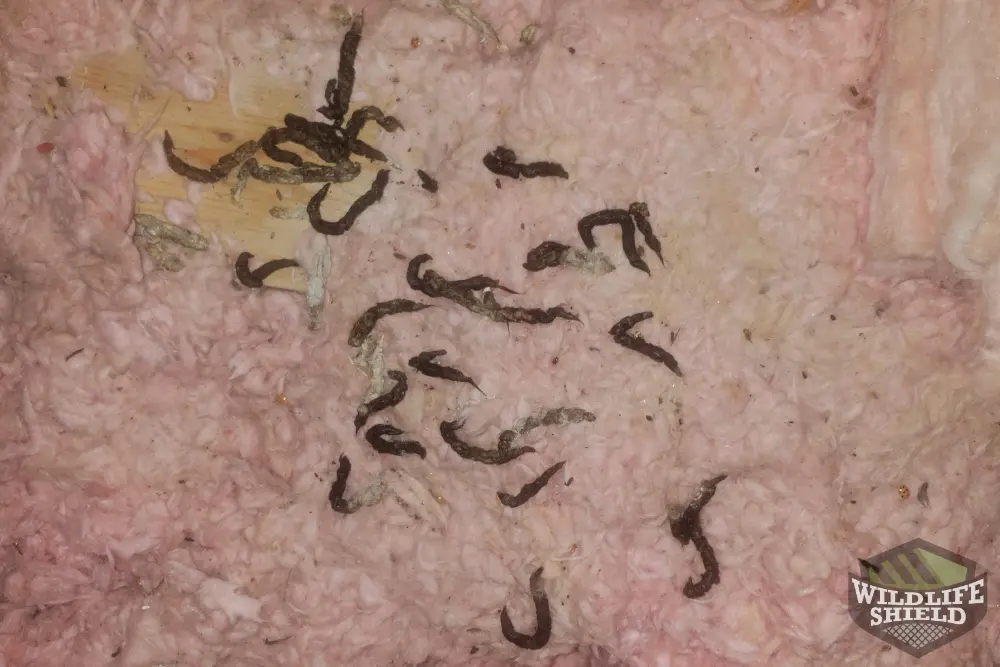
While in the attic, the technician found evidence of mice and wasps. Our technicians are trained to handle these pests as well, so he recommended having those treated for at the same time. Having more than one pest at a time is very common. Animals that break holes into the attic invite more pests inside. They can climb through the same opening and smell the other animals’ odours.
Removal and Disinfection
Immediately after the inspection, the technician installed the one-way doors to the raccoons’ entry point. One was fit for the size of the mother raccoon, while the other was small enough to let the babies out. The one-way doors swing only outward, letting the animals out safely. Once out, the raccoons would have to find another place to live.
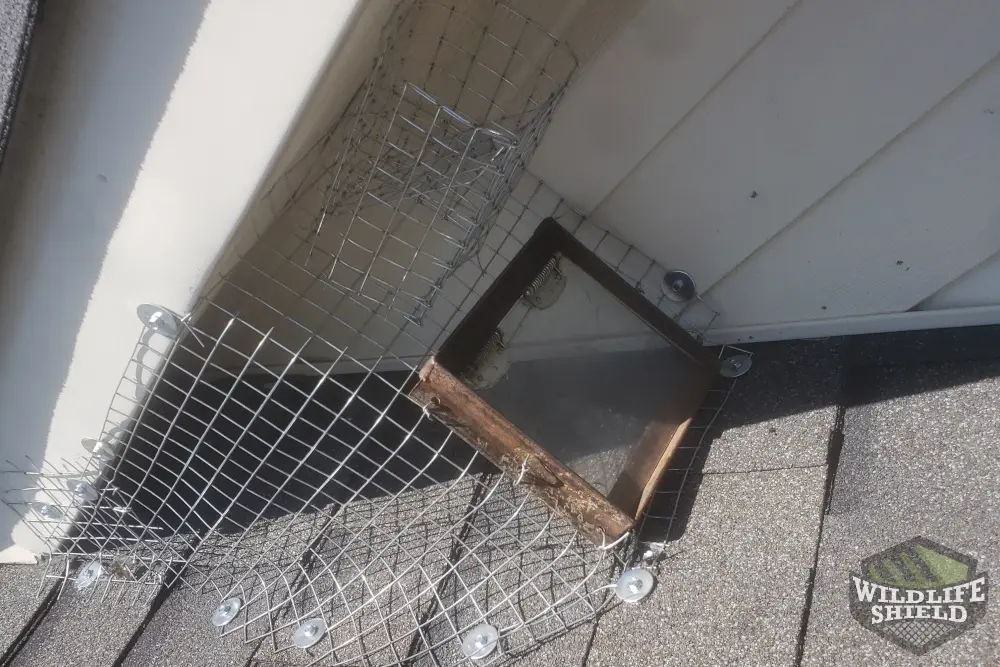
The other corner of the soffit was also covered in mesh to prevent the animals from coming right back. Raccoons will sometimes try to get back to their dens by breaking through other openings on the roof. The soffit was covered in galvanized steel mesh, a material that is strong enough to withstand the chewing and tearing of raccoons and other pests. The roof vents were not covered at this time, though covering them in the mesh would help ensure that no more animals get inside.
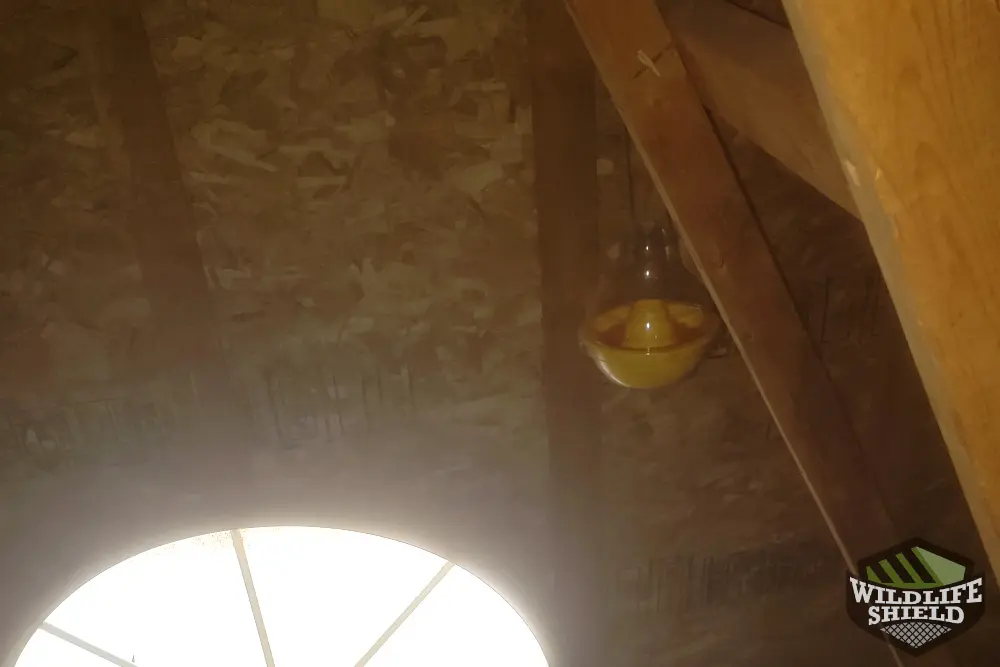
Feces Cleanup and Door Removal
A few weeks later, the raccoon activity stopped. The homeowners were no longer witnessing any raccoons on the roof, and they could not hear any noises coming from the attic. The technician then returned to the property to remove the one-way doors and replace them with mesh.
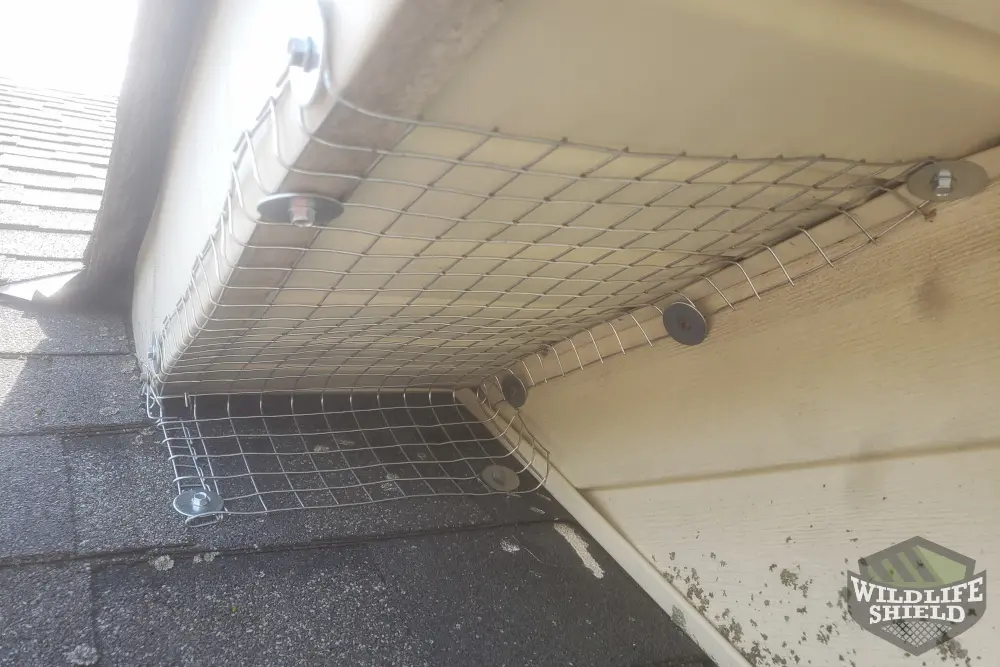
All remaining feces inside the attic were then removed and the attic was deodorized with a commercial fogger. Our technicians have access to foggers and disinfectants that eliminate bacteria and deodorize the air. Having the area disinfected following an animal invasion is important for air quality and the residents’ wellbeing. Removing odours also makes the attic less attractive to pests looking for shelter.
Conclusion
Raccoons are intelligent creatures that often break into attics in the spring and fall. They can sense that the attic is warm by the air that escapes the vents, and they recognize that it is safe from predators. They may look cute, but raccoons are destructive creatures with the potential to spread disease. If there are raccoons in your neighbourhood, or if you suspect an invasion on your property, it is best that you keep them out. Call Raccoon Control. We can remove the animals on your property humanely and keep them out permanently. Our raccoon removal services come with a 2-year warranty.
